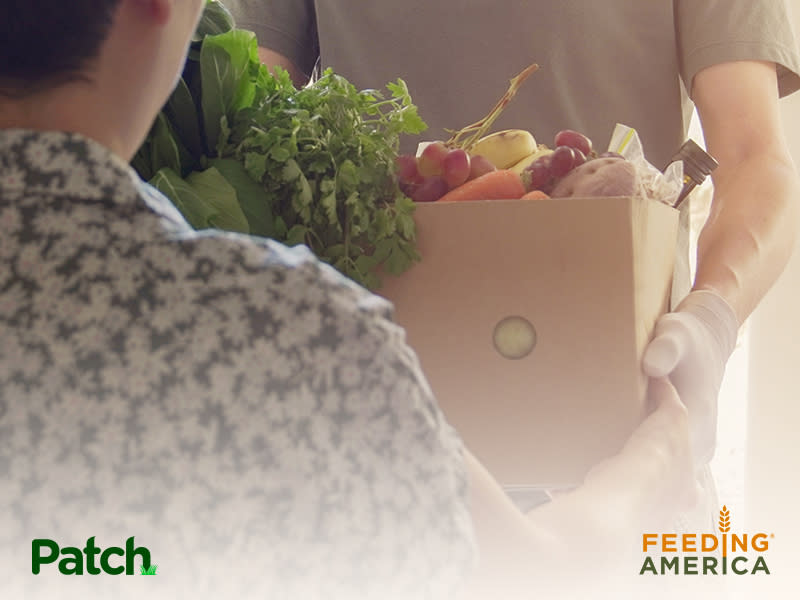State Launches Emergency Food Resources Program For Food Pantries
CONNECTICUT — A federal farmers-to-families food program that brought a Northford farm together with East Haven educators and helped to feed hundreds of families will now be used to provide emergency food resources to Connecticut’s food pantries as the state continues to respond to the ongoing impact of the global COVID-19 pandemic.
The initiative announced by Gov. Ned Lamont, Lt. Governor Susan Bysiewicz, and Connecticut Agriculture Commissioner Bryan P. Hurlburt means that local food pantries can go to the CTPantryResources.com website where they can connect to resources on getting food to stock their pantry shelves, find volunteers and get help with food shipping and storage.
The state agriculture department is now utilizing the website to facilitate statewide distribution of U.S. Department of Agriculture Farmers-to-Families Food Boxes starting Monday, Sept.28 through Saturday, Oct. 31.
“Our food pantries and nonprofit partners continue to be valuable resources, and we want to support them and the services they provide as much as possible,” Lamont said, noting that September is National Hunger Action Month.
“I encourage these organizations to visit this website and input their information so that we can connect and supply these food boxes to those in need,” Lamont said.
Cecarellis Harrison Hill Farm has been busy packing fresh #CTGrown product for delivery to Common Ground High School,...
Posted by Connecticut Department of Agriculture on Wednesday, June 24, 2020
Connecticut has been designated a high-priority area by the USDA for distribution of Farmers-to-Families Food Boxes.
As such, more than 30 trailer loads will be delivered per week. Each trailer will contain 1,152 food boxes with five pounds of meat, five pounds of dairy, 12 pounds of produce, and one gallon of milk.
As of late August, the federal Farmers to Families Food Box Program distributed nearly 90 million food boxes in support of American farmers and families affected by the COVID-19 pandemic.
Earlier this year, the Connecticut Department of Agriculture collaborated with the Connecticut Division of Emergency Management and Homeland Security, the five regional coordinators, and End Hunger Connecticut to develop a strategic approach to distribution of the USDA’s food boxes.
“As our team started to work with partners to better understand the challenges food pantries face, it became apparent that many were overwhelmed by the increased numbers of people they were serving as a result of the COVID-19 pandemic,” Hurlburt said.
“We can now utilize the website to coordinate the vast amount of information in a system way that makes it easier to deliver the food and for our pantries to distribute food,” he said.
In addition to providing the ability to sign up for food box distribution, CTPantryResources.com website includes mapping tools to identify high-need areas with lack of resources. These maps can help pantries assess the potential demand they could face as unemployment benefits change and demand for food supports increase.
“Over the past few months as I’ve joined Connecticut Food Bank and Foodshare in distributing food to those in need, the number of residents lining up to receive basic pantry staples reminds me of the stories my grandparents used to share about the bread lines during the Great Depression,” Bysiewicz said.
“As we continue to fight food insecurity in our state, our food pantries and nonprofit partners have been our boots on the ground. That’s why it’s so critical to ensure they have access to the resources needed for food procurement and distribution, volunteers, and storage, so they can continue to be a lifeline for so many families across our state.”
As Connecticut prepares to response to a potential resurgence of the virus, equipping food pantries with tools and resources to help them plan and prepare are a vital component to Connecticut’s response. However, the existing feeding programs cannot be ignored.
While the website is geared toward food pantries, it also provides information for those experiencing food insecurity.
By directing those in need to 2-1-1 for immediate attention and providing links on eligibility for programs such as Supplemental Nutrition Assistance Program (SNAP); Farmers Market Nutrition Program (FMNP); Women, Infants, and Children (WIC); and mobile food bank schedules, residents can increase access to nutritious food.
Interested food pantries or other parties must fill out an online form on the website to express their interest in receiving food boxes and confirm the ability to meet the following requirements:
· Able to accept at least 9 pallets containing 576 food boxes and 3 pallets of milk containing 576 gallons;
· Ability to unload the trailer using a pallet jack and/or forklift and/or loading dock;
· Provide on-site point of contact to receive and/or manage distribution of boxes; and
· Provide immediate distribution or have access to refrigerated storage.
Organizations that are unable to meet the criteria should contact their local emergency management director, who will connect them to regional coordinated efforts. [To locate regional emergency management directors, click here.]

Patch has partnered with Feeding America to help raise awareness on behalf of the millions of Americans facing hunger. Feeding America, which supports 200 food banks across the country, estimates that in 2020, more than 54 million Americans will not have enough nutritious food to eat due to the effects of the coronavirus pandemic. This is a Patch social good project; Feeding America receives 100 percent of donations. Find out how you can donate in your community or find a food pantry near you.
This article originally appeared on the Across Connecticut Patch

